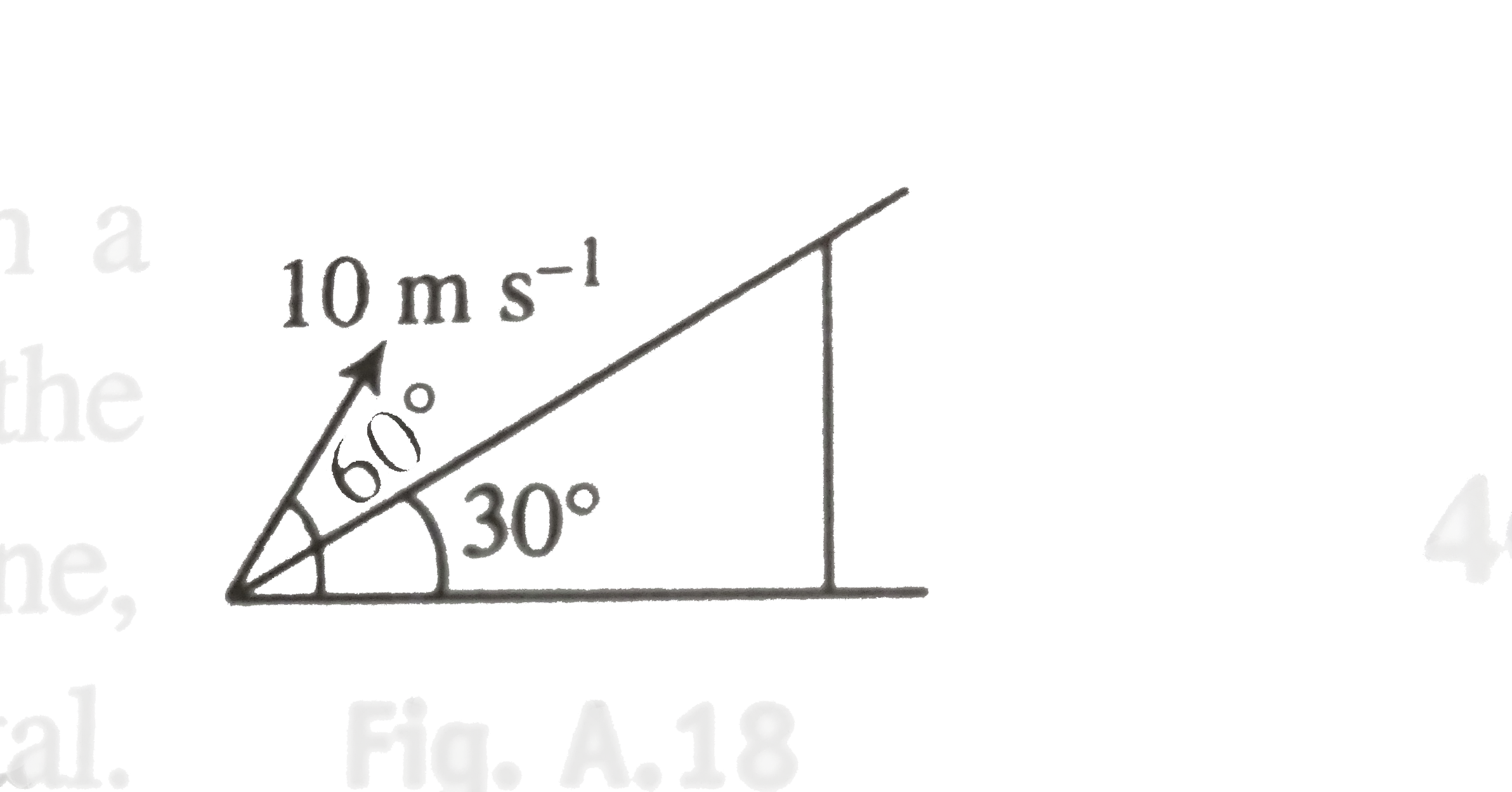A particle is thrown from a stationary platform with velocity v at an angle of 60∘ with the horizontal. The range obtained is R. If the platform moves horizontally in the direction of target with velocity v, the range will increase to :
3R2
5R2
2R
3R
The correct Answer is:D
To solve the problem, we need to analyze the motion of the particle thrown from a platform that is moving horizontally. Let's break down the solution step by step.
Step 1: Determine the Range of the Particle from a Stationary Platform
When the particle is thrown from a stationary platform with an initial velocity v at an angle of 60∘ with the horizontal, we can calculate the range R using the formula:
R=v2sin(2θ)g
Substituting θ=60∘:
R=v2sin(120∘)g
Since sin(120∘)=√32:
R=v2⋅√32g=√3v22g
Step 2: Determine the Time of Flight
The time of flight T for the projectile can be calculated using the vertical component of the velocity:
T=2vsin(θ)g
Substituting θ=60∘:
T=2v⋅√32g=√3vg
Step 3: Determine the Range when the Platform is Moving
When the platform moves horizontally with velocity v, the horizontal velocity of the projectile becomes:
vhorizontal=vcos(60∘)+v
Since cos(60∘)=12:
vhorizontal=v⋅12+v=v2+v=3v2
Now, the new range R′ when the platform moves is given by:
R′=vhorizontal⋅T
Substituting the values:
R′=(3v2)⋅(√3vg)=3√3v22g
Step 4: Calculate the Ratio of the New Range to the Original Range
To find how much the range increases, we take the ratio of the new range R′ to the original range R:
R′R=3√3v22g√3v22g=3√3√3=3
Conclusion
Thus, the new range R′ is three times the original range R:
R′=3R
Final Answer
The range will increase to 3R.
---
When the particle is thrown from a stationary platform with an initial velocity v at an angle of 60∘ with the horizontal, we can calculate the range R using the formula:
The time of flight T for the projectile can be calculated using the vertical component of the velocity:
When the platform moves horizontally with velocity v, the horizontal velocity of the projectile becomes:
To find how much the range increases, we take the ratio of the new range R′ to the original range R:
Thus, the new range R′ is three times the original range R:
The range will increase to 3R.
Topper's Solved these Questions
Similar Questions
Two particle are projected with same initial velocities at an angle 30∘ and 60∘ with the horizontal .Then
View SolutionA projectile is thrown upward with a velocity v0 at an angle α to the horizontal. The change in velocity of the projectile when it strikes the same horizontal plane is
View SolutionA ball is projected horizontal from the top of a tower with a velocity v0. It will be moving at an angle of 60∘ with the horizontal after time.
View SolutionAn object is projected with a velocity of 30ms−1 at an angle of 60∘ with the horizontal. Determine the horizontal range covered by the object.
View SolutionA particle is projected with velocity v at an angle θ aith horizontal. The average angle velocity of the particle from the point of projection to impact equals
View SolutionA body is projected with a velocity u at an angle of 60∘ to the horizontal. The time interval after which it will be moving in a direction of 30∘ to the horizontal is
View SolutionAn object is thrown along a direction inclined at an angle of 45∘ with the horizontal direction. The horizontal range of the particle is equal to
View SolutionA particle is projected with velocity of 10ms at an angle of 15° with horizontal.The horizontal range will be(g=10ms2)
View SolutionA particle is thrown at time t = 0 with a velocity of 10ms−1 at an angle 60∘ with the horizontal from a point on an inclined plane, making an angle of 30∘ with the horizontal. The time when the velocity of the projectile becomes parallel to the incline is

View SolutionA particle is thrown at time t = 0 with a velocity of 10ms−1 at an angle 60∘ with the horizontal from a point on an inclined plane, making an angle of 30∘ with the horizontal. The time when the velocity of the projectile becomes parallel to the incline is

View Solution
